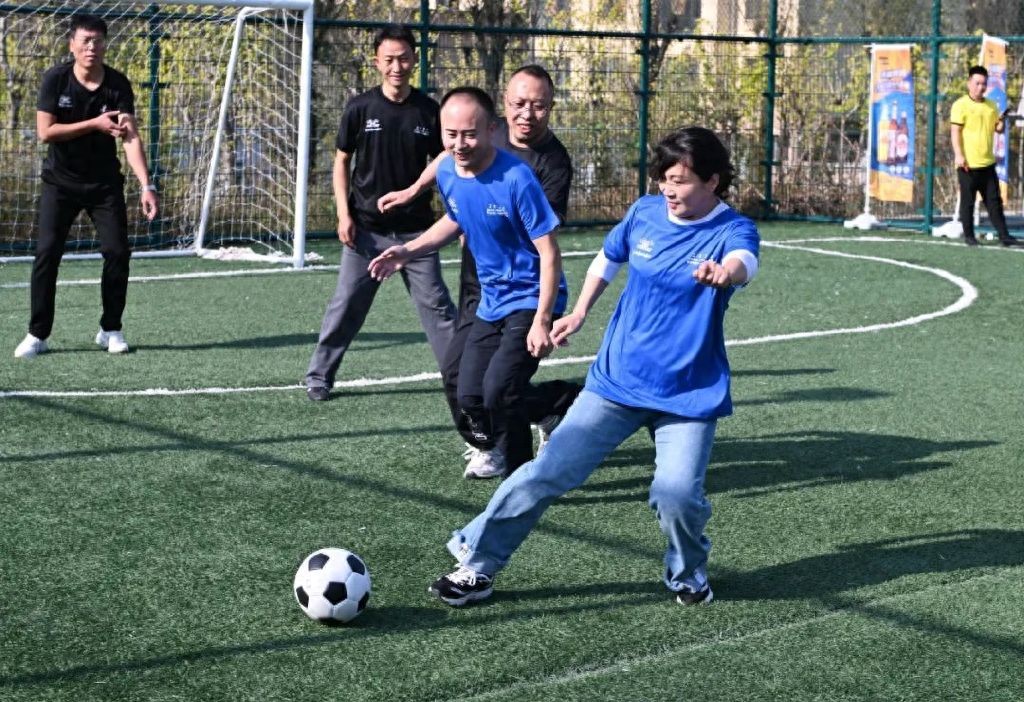The spiritual core of community football culture: people-oriented, enhance the sense of belonging

The reporter reported coldly Tang Xigang, CEO of City Football Group China and Chairman of Shenzhen Xinpeng City, focused on the need to vigorously develop community football and establish a sound football training, competition and cultural system from the grassroots level. Community football is indeed the foundation of the football industry in developed countries such as Europe, South America and Japan, and the huge football population in these countries, including football practitioners and their relatives and friends, as well as a larger fan base, the vast majority of them grow up in the community football environment, and together build a solid foundation of the football pyramid in developed countries.
If Chinese football wants to form a sustainable industrial ecology in the future, the popularization and development of community football and intergenerational inheritance are very important foundations. Only when the citizen class rooted in the community generates a sense of belonging and pride through football can they be willing to devote more energy to football, and then form a truly stable and sustainable intergenerational football population from the spiritual core, and establish a large enough base for football development.

The historical, geographical, economic, cultural and political conditions of community football in Europe, South America and Japan are different, and community football in Europe and South America basically has more than 100 years of accumulation, while Japanese football began to deepen community football after it became professional in 1993, and South Korea's city-based community football ecology took shape even later. However, the core of community football spirit in these developed countries is highly similar, that is, based on the community, the smallest group of people, through regular joint participation in football activities, a high degree of emotional resonance is formed, giving the same class and localized sense of belonging above football, and gradually rising to the urban area, city, higher administrative district and national level.
With the rapid development of gas and electricity industrialization and urbanization, community football in Europe and South America has completely changed the social life pattern of most people who are accustomed to urban communities in the context of high urban population density. Football is a high-quality group sport to release the pressure of work and survival of workers and commoners, and the earliest amateur clubs are usually centered on factories, schools, churches or taverns, and are composed of members of the class with a high degree of convergence of work and life rules, so it naturally forms a sense of belonging to a group representing different communities and classes.
These community footballs are backed by the occupational segments brought about by industrialization and urbanization, and are generally born from the labor-intensive industries of early industrialization. In the initial stage, community football culture is a group self-identity under the fit of class and identity, and community members gain a sense of belonging and identity in the community by actively participating in community football and supporting football clubs that represent the community. At the same time, the community and its amateur club will also continue to optimize the local football game, and take various measures to encourage community residents to participate more in football-related activities to give back to the community, forming a virtuous circle of two-way running, and then evolving into a tradition of belonging passed down from generation to generation.
In addition, the natural family participation attribute of community football, as well as the leisure time and energy of grassroots youth in the society, has the spiritual core attribute of cultivating young people's love of sports, active competition, hard work and establishing a team and family concept from the very beginning. In the nineteenth and twentieth centuries, the early and mature development of community football in Europe and the United States greatly reduced the social malbehavior of young people and the citizen class. More importantly, the sense of local belonging cultivated by community football is stably passed on from generation to generation in the form of football culture, ensuring the long-term sustainability of community football development.
It is this kind of sustainable development based on a sense of belonging that is the enduring spiritual internal driving force of the European and American football industry. After hundreds of years of social changes, community football can still be used as the smallest unit to form a stable and huge base of the European and American football industry.

The fundamental reason for the lack of community football culture in Chinese football is the rapid iterative industrialization and urbanization process, coupled with the world's largest population and distance "employment flow", and the lack of sufficient software and hardware in urban communities to carry out grassroots football activities. The lack of infrastructure and cultural guidance of community football in professional clubs + community football is a common problem that is difficult to develop community football in third world countries.
In community football in emerging countries, Japan is a leader. The fundamental reason is that when they founded the professional league in the early 1990s, they learned the lessons of the previous corporatization of professional clubs and the inability of campus football to open up the upward channel into professional teams, and established that professional clubs took root and deeply cultivated the local community from the beginning, and learned from the operation model of German community football.
Japan has formed the same spiritual composition as the core of community football in Europe and the United States: with the family as the smallest unit, middle-aged parents provide emotional value and football culture education for the core of community football, and the older fans and elders represent the source and sense of belonging of community football culture, and young players complete the dual growth of football and culture through daily training, competitions and cultural edification from families and clubs.
The J-League clubs must follow the principle of "geographical closeness" to ensure that they are deeply integrated with the citizens, governments and enterprises in their local areas, and the neutralization of the club's name completely eliminates the alienation from the local community caused by the previous corporatization of the club. Professional clubs are also required to actively develop a football culture with the community, not only by sharing the club's training and competition facilities with the community football, but also by interacting with local fans on a regular basis, thereby strengthening the emotional and cultural ties between the local community and the professional club, thereby increasing the sense of belonging to the local community.
The community ecology of modern society is completely different from that before World War II, so developed countries in Europe and the United States and Japan are also investing by the government and the Football Association to comprehensively renovate and increase the stadium of community football, provide more public welfare training and services in football to community residents, and keep community football alive in the era of general aging in Europe, America and Japan. At present, third-world countries such as China, Southeast Asian countries, India, the United States, and Canada are all accelerating the development of community football, and Japan's successful experience can be used as a reference to some extent.


Wonderfulshortvideo
User PlaymakerHub has posted a video.








 Links
Links
 Contact
Contact
 App
App


